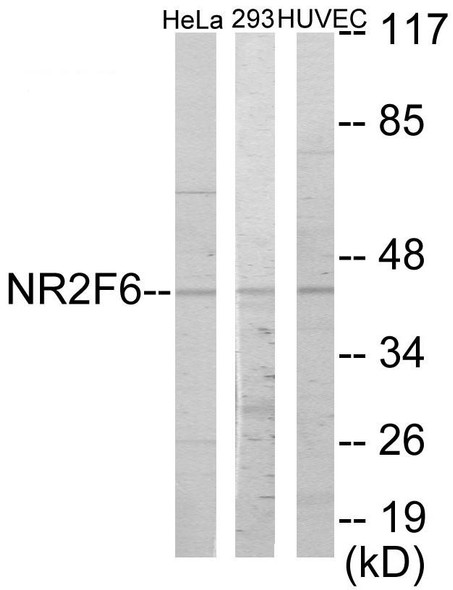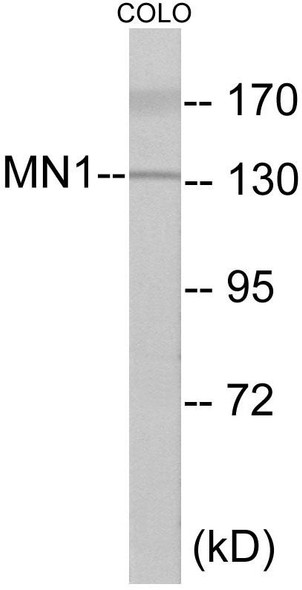Description
ACV1B Colorimetric Cell-Based ELISA
The ACV1b Colorimetric Cell-Based ELISA Kit is a cutting-edge tool designed for the accurate quantification of angiogenesis in cell-based assays. This kit is specifically tailored for researchers studying the effects of angiogenin on vascular development and cell proliferation.With its high sensitivity and specificity, the ACV1b Colorimetric Cell-Based ELISA Kit provides reliable and reproducible results, making it a valuable asset for a wide range of research applications. By accurately measuring angiogenin levels in cell culture supernatants, this kit allows for a deeper understanding of the role of angiogenin in various disease states, including cancer, cardiovascular diseases, and neurodegenerative disorders.
Whether you are conducting basic research or drug development studies, the ACV1b Colorimetric Cell-Based ELISA Kit is a powerful tool that can accelerate your research and contribute to the advancement of knowledge in the field of angiogenesis. Upgrade your research capabilities with this innovative kit today.
| Product Name: | ACV1B Colorimetric Cell-Based ELISA |
| Product Code: | CBCAB01008 |
| ELISA Type: | Cell-Based |
| Target: | ACV1B |
| Reactivity: | Human, Mouse, Rat |
| Dynamic Range: | > 5000 Cells |
| Detection Method: | Colorimetric 450 nmStorage/Stability:4°C/6 Months |
| Format: | 96-Well Microplate |
The ACV1B Colorimetric Cell-Based ELISA Kit is a convenient, lysate-free, high throughput and sensitive assay kit that can detect ACV1B protein expression profile in cells. The kit can be used for measuring the relative amounts of ACV1B in cultured cells as well as screening for the effects that various treatments, inhibitors (ie siRNA or chemicals), or activators have on ACV1B.
Qualitative determination of ACV1B concentration is achieved by an indirect ELISA format. In essence, ACV1B is captured by ACV1B-specific primary antibodies while the HRP-conjugated secondary antibodies bind the Fc region of the primary antibody. Through this binding, the HRP enzyme conjugated to the secondary antibody can catalyze a colorimetric reaction upon substrate addition. Due to the qualitative nature of the Cell-Based ELISA, multiple normalization methods are needed:
| 1. | A monoclonal antibody specific for human GAPDH is included to serve as an internal positive control in normalizing the target absorbance values. |
| 2. | Following the colorimetric measurement of HRP activity via substrate addition, the Crystal Violet whole-cell staining method may be used to determine cell density. After staining, the results can be analysed by normalizing the absorbance values to cell amounts, by which the plating difference can be adjusted. |
| Database Information: | Gene ID: 91, UniProt ID: P36896, OMIM: 601300, Unigene: Hs.438918 |
| Gene Symbol: | ACVR1B |
| Sub Type: | None |
| UniProt Protein Function: | ALK4: Transmembrane serine/threonine kinase activin type-1 receptor forming an activin receptor complex with activin receptor type-2 (ACVR2A or ACVR2B). Transduces the activin signal from the cell surface to the cytoplasm and is thus regulating a many physiological and pathological processes including neuronal differentiation and neuronal survival, hair follicle development and cycling, FSH production by the pituitary gland, wound healing, extracellular matrix production, immunosuppression and carcinogenesis. Activin is also thought to have a paracrine or autocrine role in follicular development in the ovary. Within the receptor complex, type-2 receptors (ACVR2A and/or ACVR2B) act as a primary activin receptors whereas the type-1 receptors like ACVR1B act as downstream transducers of activin signals. Activin binds to type-2 receptor at the plasma membrane and activates its serine- threonine kinase. The activated receptor type-2 then phosphorylates and activates the type-1 receptor such as ACVR1B. Once activated, the type-1 receptor binds and phosphorylates the SMAD proteins SMAD2 and SMAD3, on serine residues of the C- terminal tail. Soon after their association with the activin receptor and subsequent phosphorylation, SMAD2 and SMAD3 are released into the cytoplasm where they interact with the common partner SMAD4. This SMAD complex translocates into the nucleus where it mediates activin-induced transcription. Inhibitory SMAD7, which is recruited to ACVR1B through FKBP1A, can prevent the association of SMAD2 and SMAD3 with the activin receptor complex, thereby blocking the activin signal. Activin signal transduction is also antagonized by the binding to the receptor of inhibin-B via the IGSF1 inhibin coreceptor. ACVR1B also phosphorylates TDP2. ACVRIB is abundantly expressed in systemic sclerosis patient fibroblasts and production of collagen is also induced by activin-A/INHBA. This suggests that the activin/ACRV1B signaling mechanism is involved in systemic sclerosis. Belongs to the protein kinase superfamily. TKL Ser/Thr protein kinase family. TGFB receptor subfamily. 5 isoforms of the human protein are produced by alternative splicing. |
| UniProt Protein Details: | Protein type:Protein kinase, TKL; Kinase, protein; EC 2.7.11.30; Membrane protein, integral; Protein kinase, Ser/Thr (receptor); TKL group; STKR family; Type1 subfamily Chromosomal Location of Human Ortholog: 12q13 Cellular Component: cell surface; integral to plasma membrane; plasma membrane; activin receptor complex; receptor complex Molecular Function:activin receptor activity; metal ion binding; transmembrane receptor protein serine/threonine kinase activity; transforming growth factor beta receptor activity; protein serine/threonine kinase activity; protein binding; activin receptor activity, type I; growth factor binding; ubiquitin protein ligase binding; activin binding; SMAD binding; ATP binding; receptor signaling protein serine/threonine kinase activity Biological Process: development of primary female sexual characteristics; central nervous system development; in utero embryonic development; protein amino acid autophosphorylation; positive regulation of erythrocyte differentiation; activin receptor signaling pathway; peptidyl-threonine phosphorylation; signal transduction; protein amino acid phosphorylation; positive regulation of activin receptor signaling pathway; hair follicle development; regulation of transcription, DNA-dependent; transmembrane receptor protein serine/threonine kinase signaling pathway; positive regulation of transcription from RNA polymerase II promoter; negative regulation of cell growth; G1/S transition of mitotic cell cycle |
| NCBI Summary: | This gene encodes an activin A type IB receptor. Activins are dimeric growth and differentiation factors which belong to the transforming growth factor-beta (TGF-beta) superfamily of structurally related signaling proteins. Activins signal through a heteromeric complex of receptor serine kinases which include at least two type I and two type II receptors. This protein is a type I receptor which is essential for signaling. Mutations in this gene are associated with pituitary tumors. Alternate splicing results in multiple transcript variants.[provided by RefSeq, Jun 2010] |
| UniProt Code: | P36896 |
| NCBI GenInfo Identifier: | 547775 |
| NCBI Gene ID: | 91 |
| NCBI Accession: | P36896.1 |
| UniProt Secondary Accession: | P36896,Q15479, Q15480, Q15481, Q15482, B7Z5L8, B7Z5W5 |
| UniProt Related Accession: | P36896 |
| Molecular Weight: | 51,725 Da |
| NCBI Full Name: | Activin receptor type-1B |
| NCBI Synonym Full Names: | activin A receptor, type IB |
| NCBI Official Symbol: | ACVR1B |
| NCBI Official Synonym Symbols: | ALK4; SKR2; ACTRIB; ACVRLK4 |
| NCBI Protein Information: | activin receptor type-1B; activin receptor-like kinase 4; activin A receptor, type II-like kinase 4; serine/threonine-protein kinase receptor R2 |
| UniProt Protein Name: | Activin receptor type-1B |
| UniProt Synonym Protein Names: | Activin receptor type IB; ACTR-IB; Activin receptor-like kinase 4; ALK-4; Serine/threonine-protein kinase receptor R2; SKR2 |
| Protein Family: | Activin receptor |
| UniProt Gene Name: | ACVR1B |
| UniProt Entry Name: | ACV1B_HUMAN |
| Component | Quantity |
| 96-Well Cell Culture Clear-Bottom Microplate | 2 plates |
| 10X TBS | 24 mL |
| Quenching Buffer | 24 mL |
| Blocking Buffer | 50 mL |
| 15X Wash Buffer | 50 mL |
| Primary Antibody Diluent | 12 mL |
| 100x Anti-Phospho Target Antibody | 60 µL |
| 100x Anti-Target Antibody | 60 µL |
| Anti-GAPDH Antibody | 60 µL |
| HRP-Conjugated Anti-Rabbit IgG Antibody | 12 mL |
| HRP-Conjugated Anti-Mouse IgG Antibody | 12 mL |
| SDS Solution | 12 mL |
| Stop Solution | 24 mL |
| Ready-to-Use Substrate | 12 mL |
| Crystal Violet Solution | 12 mL |
| Adhesive Plate Seals | 2 seals |
The following materials and/or equipment are NOT provided in this kit but are necessary to successfully conduct the experiment:
- Microplate reader able to measure absorbance at 450 nm and/or 595 nm for Crystal Violet Cell Staining (Optional)
- Micropipettes with capability of measuring volumes ranging from 1 µL to 1 ml
- 37% formaldehyde (Sigma Cat# F-8775) or formaldehyde from other sources
- Squirt bottle, manifold dispenser, multichannel pipette reservoir or automated microplate washer
- Graph paper or computer software capable of generating or displaying logarithmic functions
- Absorbent papers or vacuum aspirator
- Test tubes or microfuge tubes capable of storing ≥1 ml
- Poly-L-Lysine (Sigma Cat# P4832 for suspension cells)
- Orbital shaker (optional)
- Deionized or sterile water
*Note: Protocols are specific to each batch/lot. For the correct instructions please follow the protocol included in your kit.
| Step | Procedure |
| 1. | Seed 200 µL of 20,000 adherent cells in culture medium in each well of a 96-well plate. The plates included in the kit are sterile and treated for cell culture. For suspension cells and loosely attached cells, coat the plates with 100 µL of 10 µg/ml Poly-L-Lysine (not included) to each well of a 96-well plate for 30 minutes at 37°C prior to adding cells. |
| 2. | Incubate the cells for overnight at 37°C, 5% CO2. |
| 3. | Treat the cells as desired. |
| 4. | Remove the cell culture medium and rinse with 200 µL of 1x TBS, twice. |
| 5. | Fix the cells by incubating with 100 µL of Fixing Solution for 20 minutes at room temperature. The 4% formaldehyde is used for adherent cells and 8% formaldehyde is used for suspension cells and loosely attached cells. |
| 6. | Remove the Fixing Solution and wash the plate 3 times with 200 µL 1x Wash Buffer for five minutes each time with gentle shaking on the orbital shaker. The plate can be stored at 4°C for a week. |
| 7. | Add 100 µL of Quenching Buffer and incubate for 20 minutes at room temperature. |
| 8. | Wash the plate 3 times with 1x Wash Buffer for 5 minutes each time. |
| 9. | Add 200 µL of Blocking Buffer and incubate for 1 hour at room temperature. |
| 10. | Wash 3 times with 200 µL of 1x Wash Buffer for 5 minutes each time. |
| 11. | Add 50 µL of 1x primary antibodies (Anti-ACV1B Antibody and/or Anti-GAPDH Antibody) to the corresponding wells, cover with Parafilm and incubate for 16 hours (overnight) at 4°C. If the target expression is known to be high, incubate for 2 hours at room temperature. |
| 12. | Wash 3 times with 200 µL of 1x Wash Buffer for 5 minutes each time. |
| 13. | Add 50 µL of 1x secondary antibodies (HRP-Conjugated AntiRabbit IgG Antibody or HRP-Conjugated Anti-Mouse IgG Antibody) to corresponding wells and incubate for 1.5 hours at room temperature. |
| 14. | Wash 3 times with 200 µL of 1x Wash Buffer for 5 minutes each time. |
| 15. | Add 50 µL of Ready-to-Use Substrate to each well and incubate for 30 minutes at room temperature in the dark. |
| 16. | Add 50 µL of Stop Solution to each well and read OD at 450 nm immediately using the microplate reader. |
(Additional Crystal Violet staining may be performed if desired – details of this may be found in the kit technical manual.)






